The growth rate and fruiting of apricot trees directly depend on compliance with certain rules of care. The fact is that this plant is considered photophilous, which is why it is prone to the formation of thick branched branches. This feature of the stone fruit tree may impede the development of new shoots. That is why every gardener should know the apricot pruning scheme in the fall, so that the crop is high-quality and plentiful.
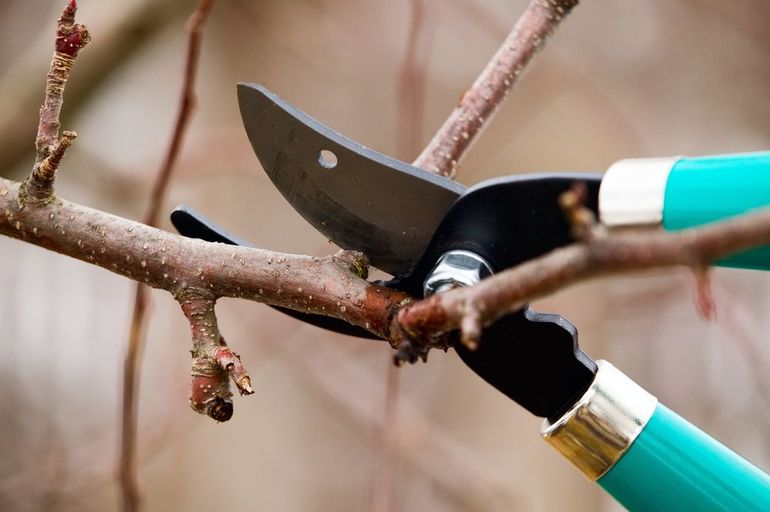
Content
Features of the procedure
There are different opinions when to cut apricot - in spring or autumn. Experts recommend carrying out the procedure even more often - three times a year. In order to form a tree with a regular crown and ensure stable fruiting, unnecessary branches should be removed in early spring, in the middle of summer and in late autumn. It’s important to understand why pruning is needed:
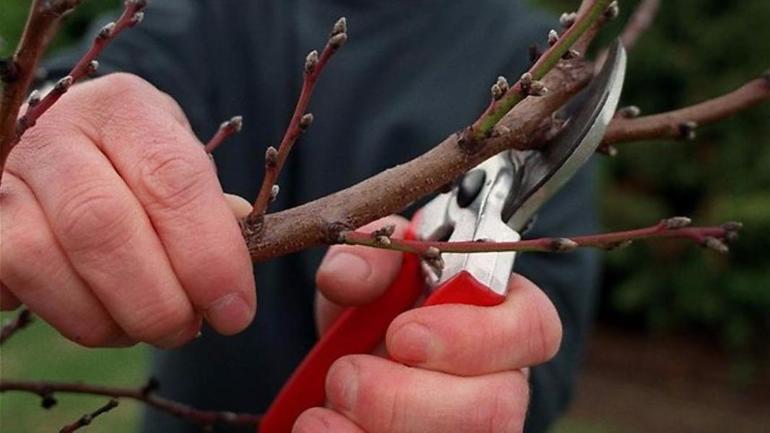
- Rejuvenation. If the crown is too thick and abundantly bears fruit, this leads to depletion and aging of the tree.
- The formation of a beautiful crown. The gardener must annually remove too long and sticking branches to make the tree attractive and healthy.
- Minimizing the risk of breaking off new shoots. It is important to regulate the amount of ovary on the branches so that they do not break under the weight of the fruit.
- For sanitary purposes. Dry and affected shoots should be regularly removed.
- Yield increase. If you do not carry out planned pruning, then the fruits will become smaller each time. After a few years, the yield level may drop by half.
Trimming Types
The key feature of the apricot is that this tree grows rapidly and forms many generative buds. Since the crown has a strong branching, and the culture is annually overloaded with fruits, this can provoke the development of diseases and the drying of branches. That is why it is necessary to carry out planned pruning of apricot trees in the fall. Most of all, varieties of early and medium ripening need this procedure.
Depending on the chosen season, the gardener can use the following types of cropping:
- Anti-aging.
- Formative.
- Restorative.
- Regulatory.
- Sanitary.
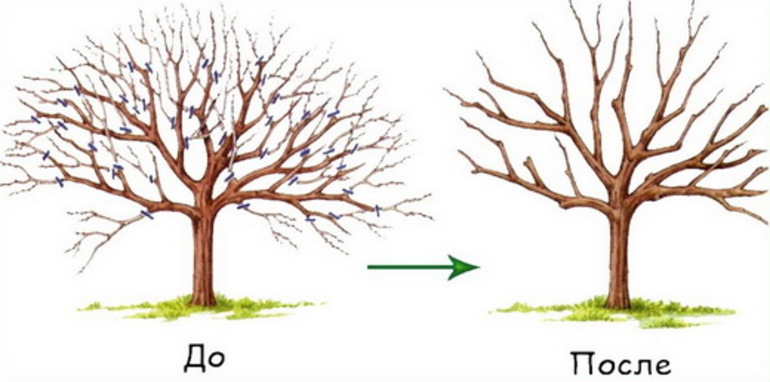
At the end of autumn, experts recommend the use of anti-aging, regulating and shaping apricot pruning. The latter option is most suitable for young trees, as a special scheme allows you to create the most suitable crown shape. The performed manipulations stimulate the active growth of new branches, so that with the arrival of heat intensive fruiting begins.
It is better to postpone forming pruning in the second or third year, when the plant begins a transitional cycle (before fruiting). All this time, the gardener can shorten only those branches that grow inward and greatly thicken the crown, which prevents the penetration of direct sunlight.
When the tree begins to bear fruit, you can begin to regulate pruning. The main objective of this procedure is to maintain an optimal physiological balance between the growth of shoots and their productivity.
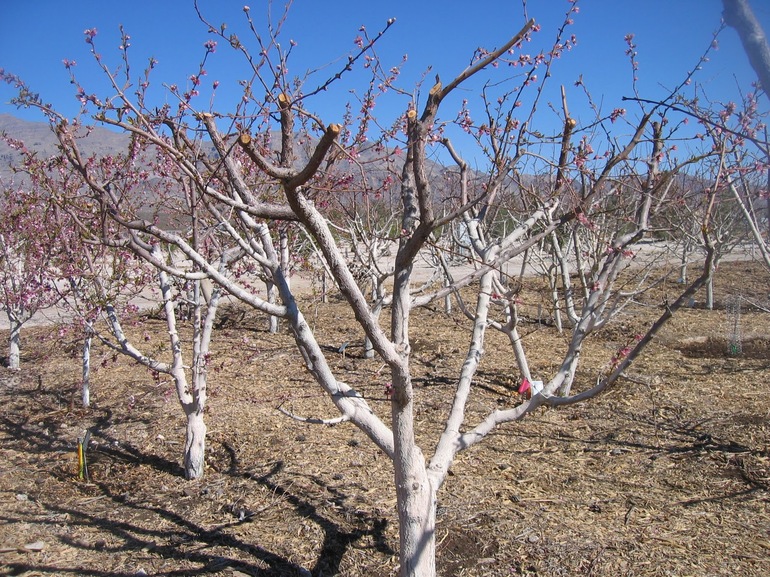
Only adult trees should be rejuvenated, in which the growth of new shoots has worsened (they grow by a maximum of 20 cm per year). After this procedure, you can notice a more intensive growth of old branches and the formation of new branches. In addition, apricot will gain good resistance to seasonal temperature changes.
If the gardener noticed any pests on the tree or the bacteria were damaged, only sanitary pruning can save the crop - the complete removal of all diseased shoots. Tree without fail processed by special compoundsthat kill pests and eliminate diseases.
Autumn pruning of apricot allows you to prepare the plant for frost and increase its yield for the next year. It is worthwhile to remove unnecessary shoots in a complex way by combining all types of autumn pruning. If, after the manipulations, the apricot will tolerate winter frosts well, then it will not need restoring treatment with the onset of spring.
Tool preparation
High-quality pruning of apricot trees is not possible without appropriate equipment. All tools must be well sharpened. To garden knife was sharp, you need to use a wet bar, which perfectly removes sawdust. Dull pruning shears should be disassembled before use to sharpen the cutting blade. After collecting, the tool must be checked for operability. The secateurs can be adjusted through the tension nut: if the grip is too tight, then it is weakened, if loose - tighten.
Apricot tree care You need to have the following tools:

- Special grafting knife.
- Secateurs.
- Whetstone for sharpening.
- Means for puttying sections (for example, garden var).
- Durable twine to maintain branches and shoots.
Proven Beginner Pattern
Already in the second year of life of a young tree, the gardener should begin the planned removal of branches. By specialists a unique cropping scheme was developedthat even beginners can handle:
- You need to cut a third of the entire length of the branches.
- Frame shoots that maintain the shape of the crown should be adjusted to maintain the optimal shape of the tree. Incorrectly grown shoots are subject to removal.
- Frame fruiting branches are trimmed carefully, their length should be in the range of 50-60 cm.
- Dry and diseased shoots must be completely removed. Places of cuts must be treated with a special protective compound. The very next year, young shoots will grow in their place.
- If the main branches contain more than 15 leaves, then you can make a tweezing (pinching the tops) so that the tree grows actively in width and not in height.
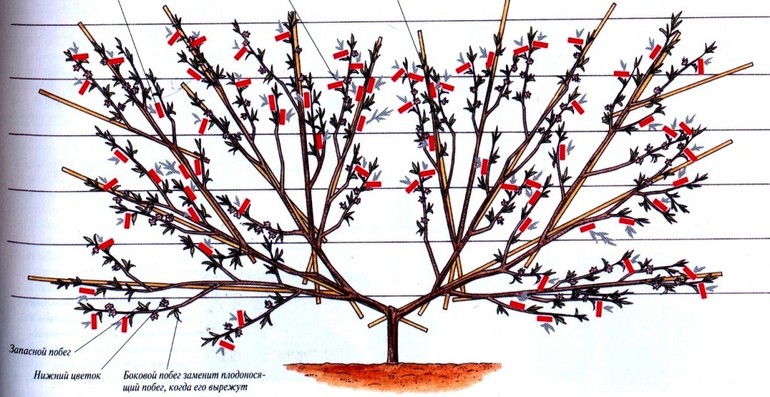
Crown formation
To regularly get a high-quality apricot crop, you need to correctly trim the extra branches. Autumn crown formation is aimed at creating optimal conditions for a tree to distribute nutrients evenly. The gardener should monitor the growth of the central stem of the apricot and the placement of skeletal branches. Do not overdo it with the shortening of young shoots until the tree is finally strong. When the growth of greens exceeds the mark of 40 cm, the time has come for the formation of the crown.
For fruit crops, experienced gardeners choose low-level pruning. On the tree, 7-10 main branches should be formed, located at a distance of 40 cm. In rare cases, in the gardens you can find original apricots with a cup-shaped or flattened crown. All branches are placed in a single order.
Apricot tree pruning scheme for the formation of a sparse-tier crown looks like that:
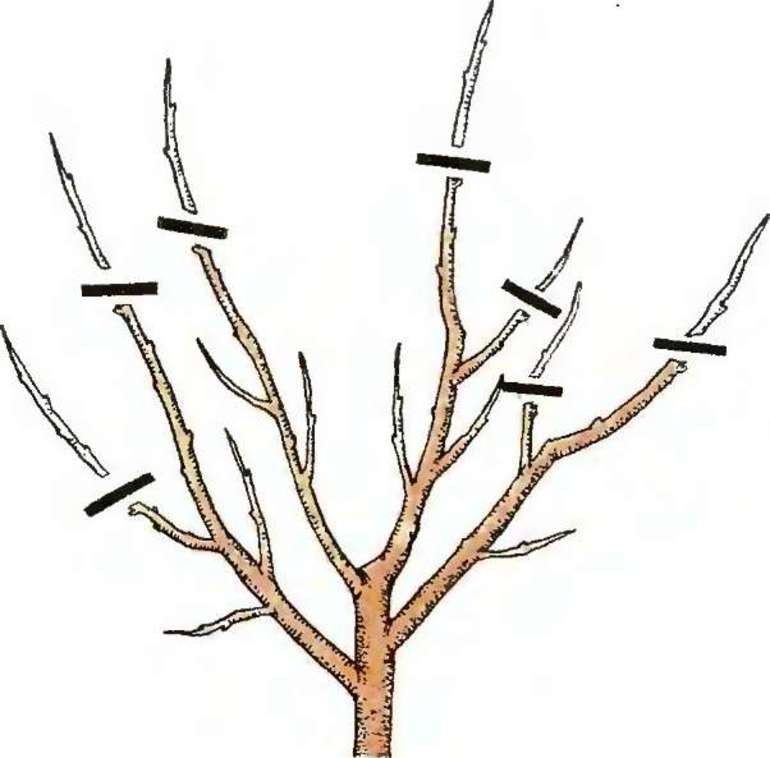
- Already in the first year after planting a seedling, you need to shorten the trunk to the fourth part. The tree needs to leave two main branches, which should be located at a distance of 30 cm from each other. All other shoots are removed under the ring. After all these manipulations, the branches are shortened so that the trunk is 40 cm higher.
- Next fall, the two most powerful shoots shorten a little. For the formation of the second tier of branches, it is necessary to increase the central trunk by 40-50 cm.
- In the third year of the tree's life, you need to shorten the new branches on the apricot at the base. The distance between the branches should be increased by 15 cm.
- All shoots on the central conductor are formative in nature. If the length of the branches exceeds 60 cm, then they are shortened by half. Short branches should not be touched. When one of the shoots has grown above the trunk, then it must be left, and the trunk itself is removed under the ring.
- If the gardener sees that on the apricot there are lateral branches with 10 or more leaves, but they are weakened, then they need to be pinched. This procedure can be repeated until they become strong and take a horizontal position. Later, such branches will be part of the fruiting part of the crown.
If the site is limited, the flattening method can be applied. With apricot growth, the gardener leaves only seven of the largest skeletal branches at a distance that will be suitable for the territory. The advantage of this crown is that the fruiting period will begin much earlier. It is worth noting that an old tree with a flattened shape will produce low yields of poor quality.
Tree care
Experienced gardeners know that restoring apricot after planned pruning directly depends on subsequent care. Only a set of measures can protect a tree from damage by bacteria and pests. After removing unnecessary branches, the gardener must perform a series of actions:
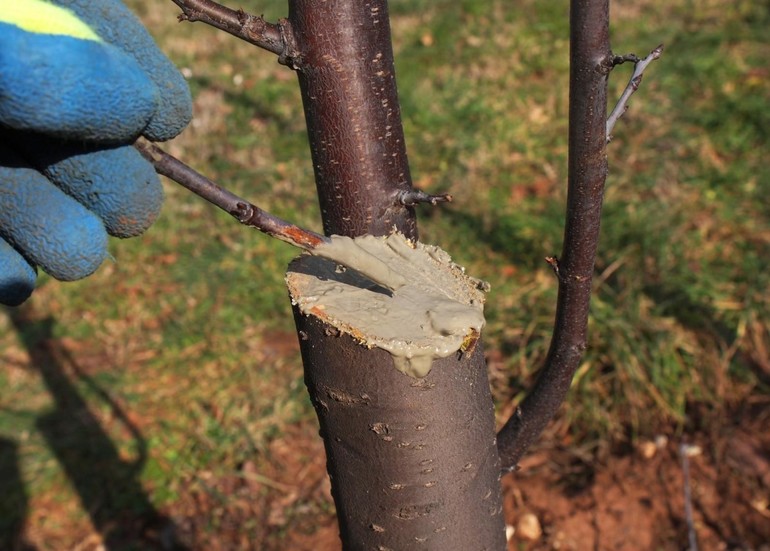
- All fresh sections and wounds should be treated with quality var. This tool promotes the speedy overgrowth of damaged areas, so bacteria and dirt will not get into them. If the garden vare is not available, ordinary paint can be used.
- If larger sections are present on the trunk, they can be disinfected with a solution of copper sulfate. And after that, apply garden var or paint.
- Early tree restoration is noted after it has been fertilized with nitrogen or phosphorus. top dressing.
Of course, it may seem to beginner gardeners that the pruning process and subsequent care are quite complex procedures. However, if you adhere to all the recommendations, they will not be difficult, and the tree will delight with plentiful harvests.
Rejuvenating an old apricot
If the gardener improperly looked after the tree, then after five years the growth of new shoots will stop. But the apricot has a good restoration function - one anti-aging pruning is enough for it to resume the growth of branches. With the advent of autumn, the gardener must adhere to two basic rules:
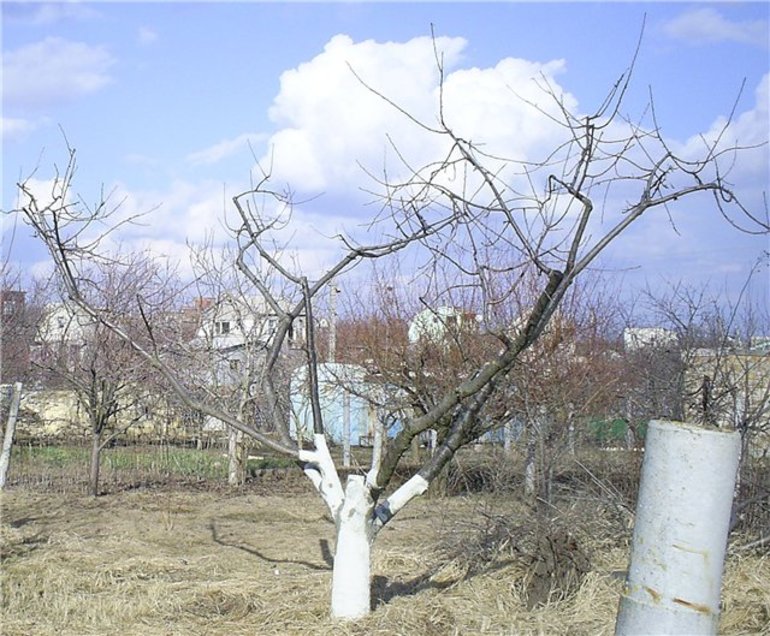
- Identify the oldest branches or those that have already ceased to bear fruit. It is forbidden to remove all unnecessary shoots at once. For work you need to use a sharp saw.
- Among the whole variety of branches you need to find the youngest. All shoots growing in a chaotic order are cut off.
After such trimming, all nutrients will be directed to the development of the remaining branches and the formation of a good ovary. It is worth noting that old wood is not immediately cut, as this can provoke the death of apricot.

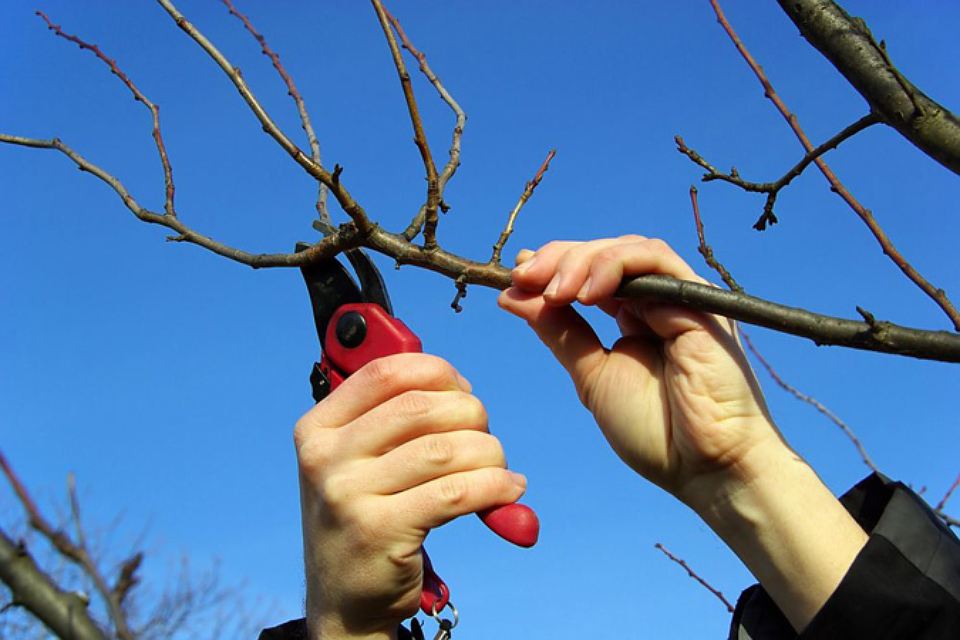 Universal scheme for apricot pruning in the fall
Universal scheme for apricot pruning in the fall